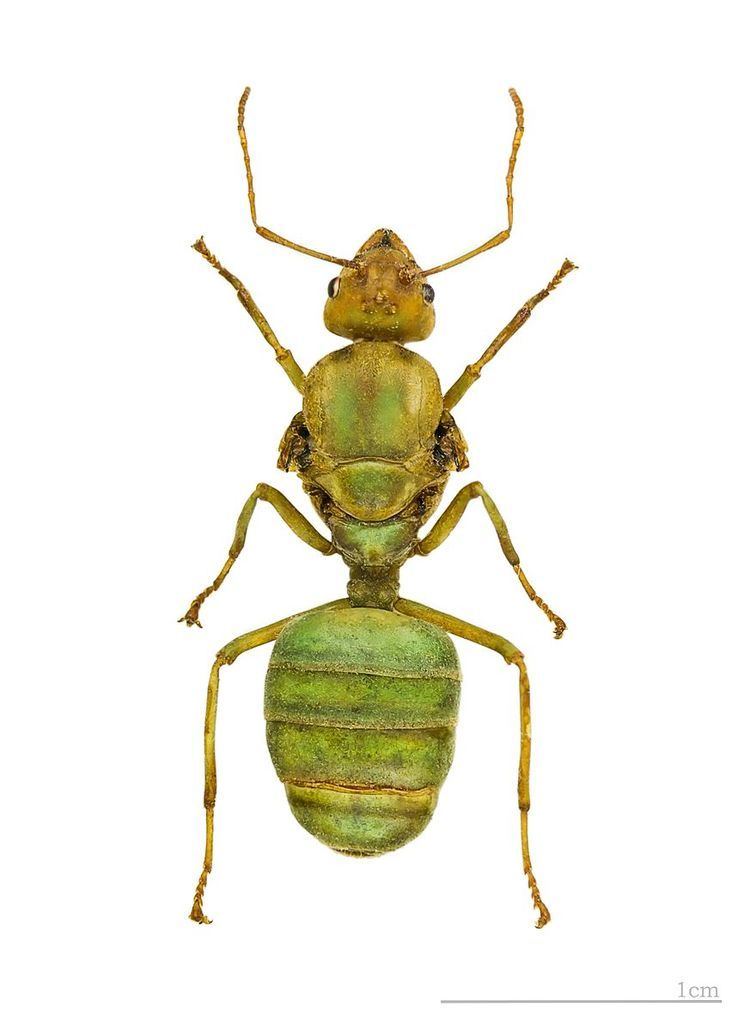 | ||
A queen ant is an adult, reproducing female ant in an ant colony; generally she will be the mother of all the other ants in that colony. Some female ants, such as Cataglyphis cursor, do not need to mate to produce babies, reproducing through asexual parthenogenesis or cloning, and all of those offspring will be female. Others, like those in the genus Crematogaster, undergo mating in a nuptial flight. Ant offspring develop from larvae specially fed in order to become sexually mature among most species. Depending on the species, there can be either a single mother queen, or potentially, hundreds of fertile queens in some species. Queen ants have one of the longest life-spans of any known insect – up to 30 years. A queen of Lasius niger was held in captivity by German entomologist Hermann Appel for 28¾ years; also a Pogonomyrmex owyheei has a maximum estimated longevity of 30 years in the field.
Contents
Development
Ants go through four stages of development: egg, larva, pupa (sometimes cocoon, called metamorphosis depending on the species) and adult. The larvae have no legs but are capable of some minor movement, such as bending their head toward a food source when fed. During this stage, the level of care and nourishment the larvae receive will determine their eventual adult form. When resources are low, all larvae will develop into female worker ants; however, if the parent of a sexually reproducing colony has a plentiful supply of food, some of the larvae will receive better nourishment than others, and develop into winged, sexually mature female ants destined to leave the colony. At this stage, the winged female ants are sometimes known as "princess ants".
Early life
When conditions are hot and humid after rain and there is minimal wind, masses of winged sexually reproducing ants or "flying ants" will leave their parent nest and take flight. The mating flights occur simultaneously in all ant nests of the particular species. The female "queen" ants will fly a long distance, during which they will mate with at least one winged male from another nest. He transfers sperm to the seminal receptacle of the queen and then dies. Once mated, the "queen" will attempt to find a suitable area to start a colony and, once found will detach her wings.
An established colony
The term "queen" is not particularly apt, as the queen ant has very little control over the colony as a whole. She has no known authority or decision-making control; instead her sole function is to reproduce. Therefore, the queen is best understood as the reproductive element of a colony rather than a leader. Once a colony is established, the worker ants meet the queen's needs such as giving her food and disposing of her waste. Because ant social structure is very complex and individual ants are relatively simple, an ant colony can be thought of as a single organism, and the individual ants as cells or limbs of the organism, as the individuals can rarely survive on their own.
Reproduction
Once the colony has established itself, the queen ant will lay eggs continuously. Among those species that reproduce sexually, the queen may choose to fertilize eggs at will by using the sperm cells retained from the nuptial flight, which will create female worker ants instead of males. If the fertilized eggs and pupae are well-nurtured, they could potentially become queens as well. Among ants who do not reproduce sexually, all of the members of the colony are female. The queen ant gives birth to every ant in a colony unless captured in a raid where they take the brood and raise it as their own.
